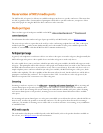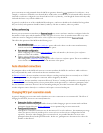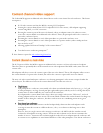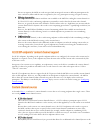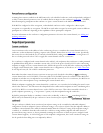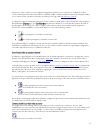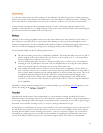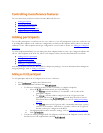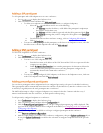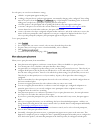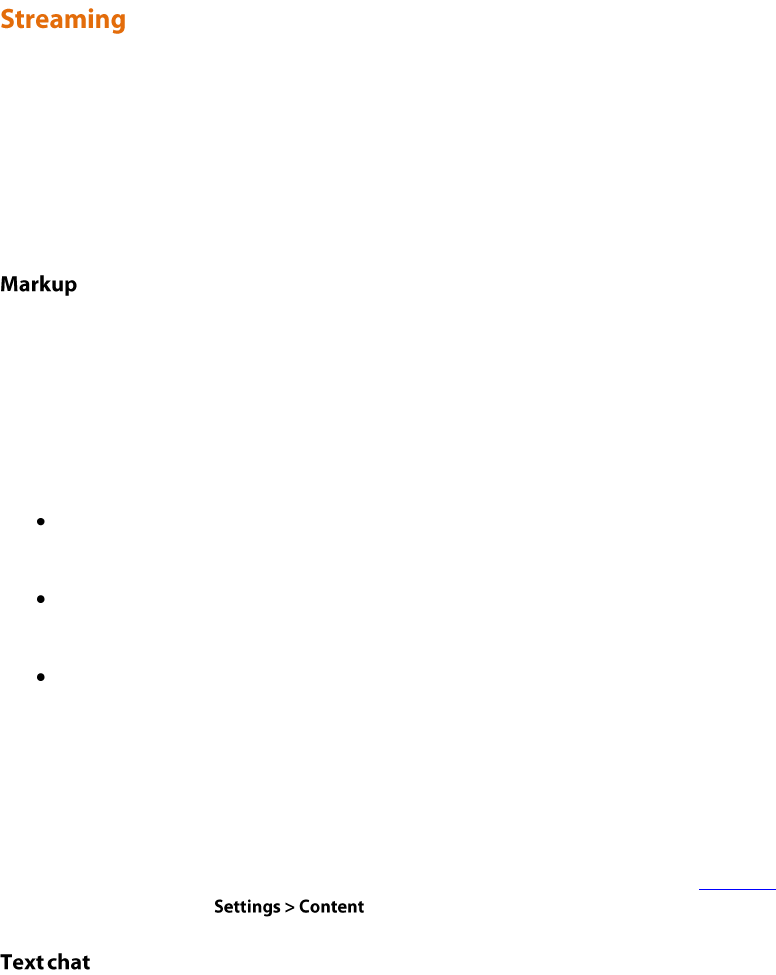
46
As well as the content stream (used for sending to H.323 endpoints), the MCU also generates a Codian proprietary
format version of the content channel video which can be viewed in conjunction with PC-based video streaming. This
ensures that, if desired, all participants and viewers for a conference are able to access all of its associated media.
Content channel streaming also allows participants using H.323 video conferencing endpoints without H.239
capability, or SIP endpoints to view a high resolution version of the content channel. Content channel streaming also
provides some features not available via the H.239 protocol:
"Markup" is the overlaying of graphics and text onto the content channel video; this could be used, for instance, to
draw attention to a specific element of a presentation slide. Markup can only be performed through the content
channel streaming interface, and is accomplished via the simple mechanism of clicking and dragging with the mouse,
with extra controls for changing the drawing color or clearing the markup when its usefulness has passed.
Content channel markup also has the following characteristics:
All content streaming viewers have equal markup capabilities. This means that either all viewers are able to
perform markup on the content channel video (or clear it), or all are unable to do so - it is not possible to
restrict markup to just a subset of active viewers.
The video markup, although it can only be edited by streaming viewers, will be seen by content channel
streaming viewers, by participants connected via H.323 endpoints that are receiving the content channel,
and by any participants that are viewing the content as part of their main video.
Video markup is normally used as an overlay to content channel video as supplied by a H.239, BFCP, or
VNC connection. However, for a conference with content channel operations enabled, it is also possible to
form a content channel comprising just the markup applied to an otherwise blank video stream. This can be
accomplished simply by starting to stream the conference's content channel and performing the usual
markup operations on the (empty) content channel displayed. Adding markup to such a blank channel
"activates" it, and will cause a video channel to be opened to those H.323 conference endpoints which have
H.239 capabilities.
The ability of content channel streaming viewers to perform markup is governed by the unit-wide Markup of content
channel video setting on the page.
In parallel with, though in many senses independently of, content channel streaming, the MCU also provides a
mechanism for those streaming a conference's content channel to communicate with other conference participants via
text messages. Beneath the window showing the content channel video, streaming viewers are able to type messages
that will be sent to all other streaming viewers, as well as see messages that other users type.
In order that users contributing text messages can be identified, each content streaming viewer has an associated user
ID, and this ID is pre-pended to each message when it is sent out to other viewers' displays. If the content channel
streaming has been initiated via the streaming-only interface, each user is required to supply a Sign-in name before
streaming starts, and this sign-in is used as their text chat identifier. If streaming has been initiated via the Stream
control on the MCU conference list, the user's web interface login ID will be used as their text chat identifier.



